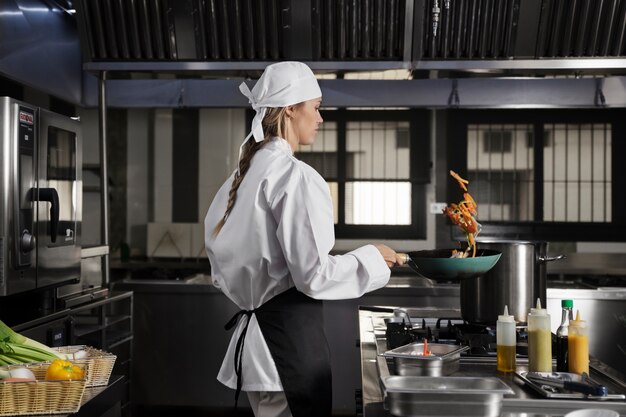Introduction:
Working in a commercial kitchen is a demanding and rewarding profession. However, behind the mouthwatering dishes and the delectable aromas lies an inferno of heat that kitchen workers must confront daily. In this article, we delve into the challenges faced by kitchen workers as they brave extreme heat, the impact on their health and safety, coping strategies to stay cool and efficient, and industry solutions to mitigate heat in the culinary environment.
Understanding the Inferno: The Heat in Commercial Kitchens
Commercial kitchens are bustling hives of activity where chefs, line cooks, and kitchen staff work tirelessly to prepare delightful culinary creations. However, the intense heat from various cooking equipment, ovens, grills, and stovetops can create an unbearable working environment. The temperature in such kitchens can soar to well above comfortable levels, making it challenging for kitchen workers to carry out their tasks efficiently.

Impact on Kitchen Workers: Health and Safety Concerns
The extreme heat in commercial kitchens poses significant health and safety concerns for the dedicated professionals working in these environments. Prolonged exposure to high temperatures can lead to heat-related illnesses such as heat exhaustion and heatstroke. These conditions can cause fatigue, dizziness, nausea, and, in severe cases, even lead to life-threatening situations. Moreover, the risk of accidents, such as burns and slips, increases as kitchen workers’ focus may waver due to the discomfort caused by the heat.
Coping Strategies: Staying Cool and Efficient
To combat the inferno in commercial kitchens, kitchen workers must adopt various coping strategies to stay cool and maintain their efficiency. Hydration is paramount, and drinking plenty of water throughout the shift helps regulate body temperature. Employers should encourage regular breaks in designated cool areas to allow their staff to recuperate from the heat. Additionally, providing kitchen staff with appropriate personal protective equipment, such as breathable uniforms and cooling gear, can make a significant difference in their comfort levels.
Implementing proper ventilation systems, such as exhaust hoods and fans, can help circulate air and reduce ambient heat. Chefs and kitchen managers can also modify cooking schedules, prioritizing tasks during cooler hours whenever possible. Furthermore, creating a positive and supportive work environment fosters teamwork and helps kitchen workers cope with the challenges of extreme heat.
Industry Solutions: Mitigating Heat in the Culinary Environment
The culinary industry recognizes the importance of addressing the issue of extreme heat in commercial kitchens. Various innovations and technology have emerged to help mitigate the inferno. Energy-efficient cooking equipment and appliances produce less heat, helping to maintain a more comfortable working environment. Advanced ventilation systems not only improve air circulation but also filter out smoke and odor, enhancing the overall kitchen atmosphere.
Training and education play a crucial role in raising awareness among kitchen workers and employers about the risks of extreme heat and the appropriate measures to combat it. By promoting a culture of safety and well-being, the culinary industry can protect its workforce and ensure a sustainable future for kitchen workers.
Conclusion:
Cooking in the inferno of a commercial kitchen presents formidable challenges for kitchen workers. The extreme heat not only affects their efficiency and productivity but also poses serious health and safety risks. By understanding the impact of extreme heat, adopting coping strategies, and embracing industry solutions, kitchen workers can conquer the inferno and continue to delight us with their culinary masterpieces in a safer and more comfortable environment.




